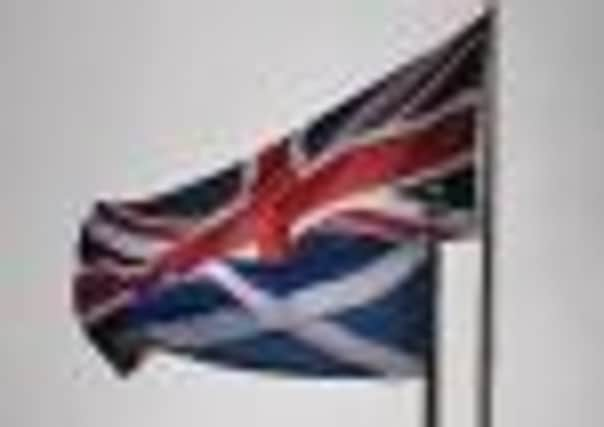£100bn: Scots’ share of UK debt, says report


The paper, by the respected David Hume Institute, reveals that the public sector debt, pension costs and IOU’s apportioned to Scotland would far outweigh any assets it would be entitled to take from the UK in a post-referendum shake down.
While refraining from stating an exact figure, it estimates that Scotland would be left to take responsibility for between £83.5bn and £102bn. The sum has been inflated by the UK’s public sector debt mountain which has mushroomed since the financial crash.
Advertisement
Hide AdAdvertisement
Hide AdSo deep is the deficit, the paper warns that by 2014 – the planned date of the SNP referendum – the UK’s debts will have increased so much that Scotland’s share will have risen by another £35bn.
The uncertainty over the bill Scotland would be handed after independence was seized on by opponents last night, as they warned of the unknown cost of secession.
But the SNP pointed to other findings in the Institute’s paper, which show that, so long as Scotland gets all of the North Sea oil, it would still have a lower debt burden than the UK as a whole after independence.
Its public sector debts, with oil revenues, would be 52.2 per cent of its annual £159bn GDP, the institute estimates. An equivalent figure for the debts of the whole of the UK is 64.6 per cent, it concludes.
In a finding which shows how important oil is to the Scottish economy, the institute finds that once it is taken out of the equation, Scotland’s debt burden rockets to 66 per cent of GDP, above the UK average.
Lesley Sutton, the author of the report, insists that there are “too many uncertainties and too many scenarios – most of which could change significantly by the time of the referendum – to provide sensibly any single figure that would be ‘Scotland’s debt’ total’”.
However, the paper is the first attempt to analyse the kind of sums that an independent Scotland would be left with after negotiations with the UK Government. It shows that the UK Government now has more than £2 trillion of public sector debt, pension costs, PFI payments and other liabilities on its books, all of which must be covered. On the other side of the balance sheet, it has £821bn of “assets”. It estimates that Scotland would be asked to shoulder between £152bn and £171bn and claim around £69bn of the assets.
“Based purely on these data, an independent Scotland would be accountable for net liabilities of circa £83.5bn or £102.8bn if using the latest public sector debt data,” the report declares.
Advertisement
Hide AdAdvertisement
Hide AdThe report excludes any costs from the two Scottish banks currently owned by the taxpayer, the Royal Bank of Scotland and HBoS.
A spokesperson for Finance Secretary John Swinney said: “These figures confirm that Scotland is in a stronger financial position than the UK as a whole, and that an independent Scotland will have lower public sector debt than the UK.”
However, Scottish Labour’s shadow cabinet secretary for finance, Ken Macintosh MSP, added: “The very fact this analysis has come up with a number of different scenarios reinforces the uncertainty that surrounds separation. Some are more favourable that others, but all rely heavily on one single, volatile commodity – oil. I don’t want to gamble with Scotland’s future, I don’t want to see Scotland’s future based solely on oil alone.”
A Whitehall source added: “Scotland and all the UK benefits from risk sharing and cost sharing together.”